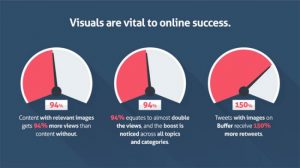Your mood, your demeanor and your verbal and nonverbal behaviors exert a powerful influence on your team members and the working environment.
Every moment of the day, our brain is busy scanning the environment for unpleasant things we should avoid and pleasant things we should rush toward.
Those things we actively work to avoid put us in “defensive” mode, and the positive items we seek out trigger what she describes as, “discovery” mode.
Studies in neuroscience show that the defensive reactions are managed by the fast thinking portion of our brain responsible for fight or flight responses, while the discovery mode is managed by our slower, more deliberate thinking brain.
It does not take a great leap of scientific understanding to imagine that as managers, we should strive to keep our team members in the discovery zone and out of the defensive zone as much as possible.
Consider these two contrasting examples:
Imagine walking into work and bumping into a grim-faced boss in the hallway who momentarily glowers at you and keeps walking.
What’s your reaction to this encounter? Confused? Disarmed? Probably.
A bit later in the day, you find yourself delivering an update to this same boss. You walk into the room and while he is not quite as dour-faced as he was earlier this morning, his body language and facial expressions project impatience and dissatisfaction.
During the update, he scribbles down a few notes, and offers a terse, “You need to fix this,” in response to a problem you highlighted. When you complete your update, he offers a curt, “OK,” which you interpret as your signal to leave.
How are you feeling now? Chances are, both of the exchanges combined to leave you concerned about your standing with your boss. His behaviors triggered reactions in your mind that place you squarely in defensive mode.
The narrative playing in your mind is negative and fearful sounding. What did I do wrong? Am I in trouble? Why isn’t he communicating with me?
Rewind the clock and imagine the same two encounters with very different dynamics. As you walk through the door, the boss greets you with a smile and direct eye contact and a warm, “Good morning! I am looking forward to our update this afternoon. Is there anything I can do to help you prepare?”
And then during the update, he asks thoughtful questions, wonders openly about how he might secure more help for your initiatives and thanks you for the clarity of your update.
These significantly more positive exchanges feel good and trigger positive thoughts about your work and about the next steps with your activities. You are in discovery mode and this is a great place to be.
Powerful behaviors to boost team performance
The practical application of the latest neuroscience work and the fabulously practical and powerful examples in Webb’s book are important for managers and leaders at all levels. As managers, we are accountable for forming and framing an environment that supports creativity and problem-solving and keeps fear on the outside looking in at us.
Adjust your attitude before the workday starts
Years ago, I observed a client who would sit in her car in the parking lot for 10-minutes every morning before entering the office. When I asked her what she was doing, she answered, “I was preparing my attitude for the day.” I was fascinated!
Upon further questioning, I learned that she found it helpful to spend a few moments in quiet contemplation pushing out the stress of the early morning commute and focusing on the positive impact she would have on her team during the day.
By the time she walked in the door, she had parsed through her day’s goals and made a personal commitment to help and not hinder her team. Needless to say, her team loved her and responded to her approach with consistently outstanding results.
Succeed one encounter at a time
A mentor of mine once shared that her secret to success was to remain firmly in the moment throughout the day, committed to succeeding in doing something good in every single encounter.
If the encounter involved an irate customer, it was an opportunity to turn things around. If the encounter was to offer feedback to an employee, it was a chance to apply her coaching skills. If the encounter involved explaining last month’s subpar sales results, it was an opportunity to reflect and identify a plan for continuous improvement. Imagine working your way through a day filled with small victories!
Dispense autonomy liberally
Helping people feel empowered to take action and to control their destiny supports the movement to discovery mode. The micromanager is a character we all dislike intensely, in large part, because he kills any feelings of autonomy with his approach. The more you can let go and display that you trust your team members, the more they will feel in charge of their own destinies.
Treat group mistakes and misfires as an opportunity to learn and bond
While this guidance risks sounding a bit Pollyanna-positive, individuals and teams make mistakes and how we respond to those mistakes impacts group behaviors in the future.
No manager is excited that his/her team made a mistake, however, effective managers help individuals and groups look for the lesson to be learned when misfires happen. You can show momentary disappointment at the predicament, but help people turn the situation around by focusing on generating ideas to strengthen future performance.
It is a fine line between building a culture of accountability and triggering fear when someone or some group fails. Be careful not to cross the line and invite fear back into your environment.
Tune into the impact you have on others
Years ago, I was upset to learn that a good number of my employees feared me. In my mind, I was nothing but supportive and constructive. Apparently, I had exhibited anger at a situation at one point in time and rumor spread that I had a temper that you did not want to trigger.
I was fortunate to learn about the fear I had instilled in my team from a valued confidant. I worked overtime to model behaviors that ultimately squashed this notion that I was to be feared. Ask for feedback and then do something about it.
The bottom-line for now
We have ample opportunities every single day to reinforce behaviors that support the emergence of what Webb describes as “discovery mode.” Even the most stressful situations are opportunities to manage ourselves and model the behaviors needed to inspire creativity and problem-solving. Today is a great day to push fear out the door.
Business & Finance Articles on Business 2 Community(39)






